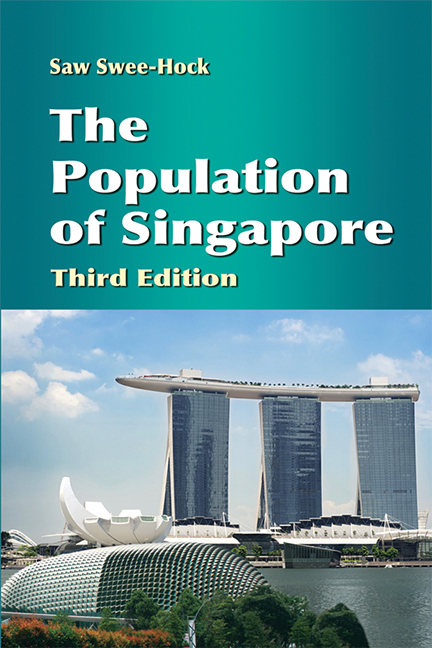Book contents
- Frontmatter
- Contents
- List of Tables
- List of Figures
- Preface
- Preface to Second Edition
- Preface to Third Edition
- 1 Background
- 2 Population Growth and Distribution
- 3 Changing Population Structure
- 4 Migration
- 5 Mortality Trends and Differentials
- 6 Marriage Trends and Patterns
- 7 Divorce Trends and Patterns
- 8 Fertility Trends and Differentials
- 9 Family Planning, Abortion and Sterilisation
- 10 Fertility Policies and Programmes
- 11 Immigration Policies and Programmes
- 12 Labour Force
- 13 Future Population Trends
- Appendix
- Bibliography
- Index
6 - Marriage Trends and Patterns
Published online by Cambridge University Press: 21 October 2015
- Frontmatter
- Contents
- List of Tables
- List of Figures
- Preface
- Preface to Second Edition
- Preface to Third Edition
- 1 Background
- 2 Population Growth and Distribution
- 3 Changing Population Structure
- 4 Migration
- 5 Mortality Trends and Differentials
- 6 Marriage Trends and Patterns
- 7 Divorce Trends and Patterns
- 8 Fertility Trends and Differentials
- 9 Family Planning, Abortion and Sterilisation
- 10 Fertility Policies and Programmes
- 11 Immigration Policies and Programmes
- 12 Labour Force
- 13 Future Population Trends
- Appendix
- Bibliography
- Index
Summary
An integral part of the study of the population of any country is an investigation of nuptial trends and patterns because the formation and dissolution of marital unions have an important bearing on the level of fertility. We may regard marriage as an event that marks the beginning of the potential period of childbearing and marital dissolution as the end of this period. This is particularly true in a country like Singapore where the modern form of consensus unions among persons who have never been married according to either legal or customary rites is rarely practised. An analysis of marriage trends and patterns will be presented in this chapter, while the next chapter will be devoted to the related issues of divorce trends and patterns.
In some countries, the study of nuptial trends is handicapped by a paucity of data compiled from a non-compulsory system of registering marriages and divorces. This is true in the case of Singapore for the period prior to 1961 when not all the different types of marriages solemnized according to the various customs and religions were required by law to be registered as in the case of births and deaths. In this chapter, we will therefore present only a brief account of marriages for this early period, but a more detailed analysis for the last three decades when more comprehensive marriage statistics were compiled and published.
MARRIAGE CUSTOMS AND LAWS
The great diversity of religions that was observed in an earlier chapter necessarily implies that it is quite impossible to introduce any common legislation to govern the different types of marriages taking place in the country. It was only natural that over the years separate laws were put in place to regulate marriages solemnised according to the various religious and customary rites. From the late nineteenth century, there existed three distinct legislations regulating marriages solemnised in the country, but in 1961 the two governing non-Muslim marriages were replaced by a new one which introduced the compulsory registration of these marriages.
Prior to September 1961, the two legislations regulating non-Muslim marriages were the Christian Marriage Ordinance 1940 and the Civil Marriage Ordinance 1940. The former ordinance was enacted to repeal the previous ordinance of 1899, and came into force on 1 January 1941.
- Type
- Chapter
- Information
- The Population of Singapore , pp. 102 - 126Publisher: ISEAS–Yusof Ishak InstitutePrint publication year: 2012



